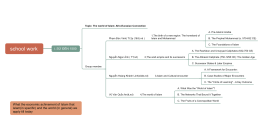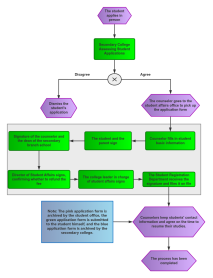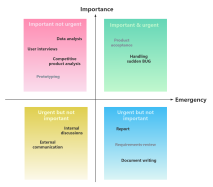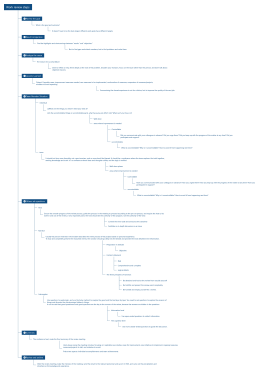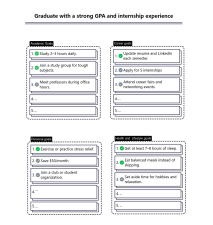The world of Islam: Afro-Eurasian Connection
2025-11-17 13:39:09 0 Report
Log in to view full content
history to 1500
Other works by the author
Outline/Content
SỬ ĐẾN 1500
Topic: The world of Islam: Afro-Eurasian Connection
Group member:
Vũ Văn Quốc An(tt,nd)
Phạm Đức Vinh( Tt 2p (1&3) nd )
1,The birth of a new region: The homeland of Islam and Mohammad
A. Pre-Islamic Arabia
A tribal
Polytheistic society on the periphery of the Byzantine and Sassanian (Persian) Empires.
Key city: Mecca – a major commercial and religious hub, home to the Ka'aba.
B. The Prophet Muhammad (c. 570-632 CE)
His life in Mecca: Merchant, known as "Al-Amin" (the trustworthy).
The Revelation (610 CE): The first revelation from God (Allah) through the Angel Gabriel in the cave of Hira.
The Message: Strict monotheism, social justice, care for the poor, and the finality of prophecy.
The Hijra (622 CE): Persecution in Mecca leads to the migration to Medina. This event marks the beginning of the Islamic calendar and the establishment of the first Muslim community (Ummah).
Return to Mecca: Muhammad and his followers eventually conquer Mecca, cleansing the Ka'aba of idols and consolidating the faith in Arabia.
C. The Foundations of Islam
The Quran: The holy book, believed to be the literal, unaltered word of God.
The Five Pillars: The core practices of the faith.
Shahada (Declaration of Faith)
Salat (Ritual Prayer five times a day)
Zakat (Almsgiving/Charity)
Sawm (Fasting during Ramadan)
Hajj (Pilgrimage to Mecca)
Nguyễn Ngọc Ánh ( TT,nd)
2,The arab empire and its successors
A. The Rashidun and Umayyad Caliphates (632-750 CE)
Rapid Expansion
Map it Out
A Multi-Ethnic Empire
B. The Abbasid Caliphate (750-1258 CE): The Golden Age
Move the capital to Baghdad (founded in 762 CE).
The "Golden Age"
House of Wisdom
C. Successor States & Later Empires
Explain that the unified caliphate eventually fragmented, but the Islamic world remained vibrant.
Key examples:
Al-Andalus (Islamic Spain): A beacon of learning and coexistence in Cordoba.
The Ottoman Empire (Turkey, Balkans, Middle East, North Africa).
The Safavid Empire (Persia/Iran).
The Mughal Empire (India).
Nguyễn Hoàng Khánh Linh(slide,nd)
3,Islam and Cultural encounter
A. A Framework for Encounter:
Islam provided a unifying framework (the Quran, Arabic script, Sharia law) that could incorporate and synthesize elements from the various cultures it encountered. It was not about erasing cultures, but often about translating them into an Islamic context.
B. Case Studies of Major Encounters
Encounter with the Greco-Roman World:
What Happened: Muslim scholars encountered the works of Greek philosophers like Plato and Aristotle, as well as Greek science and medicine, in the conquered Byzantine and Sassanian lands.
The Result: They didn't just preserve these texts; they translated, critiqued, and expanded upon them. Think of it as the "recovery and enhancement" of classical knowledge.
Encounter with the Persian World:
What Happened: The conquest of the Sassanian Empire brought Islam into contact with a sophisticated, ancient bureaucratic and courtly culture.
The Result: Deep influence on Islamic governance, art, architecture, literature, and historiography. The Persian language and literary traditions (e.g., epic poetry) were woven into the fabric of Islamic civilization, especially in the eastern parts of the empire.
Encounter with South Asian Culture:
What Happened: Through trade and later conquest (e.g., the Mughals), Islam encountered India.
The Result: Adoption and transmission of Indian mathematics (the concept of zero, decimal system), and astronomy. A unique blend of architectural styles emerged, like the Taj Mahal.
C. The "Circle of Learning" - A Key Outcome
The Flow of Knowledge: Greek science → Translated into Arabic in Baghdad → Enhanced by Muslim scholars → Transmitted to Muslim Spain (Al-Andalus) and Sicily → Translated into Latin → Entered and stimulated medieval Europe.
This process was crucial for the European Renaissance.
Vũ Văn Quốc An(tt,nd)
4,The world of Islam
A. What Was the "World of Islam"?
It was a civilizational sphere, not a single empire. It was bound by:
Shared Faith: The principles of Islam.
Shared Language of Learning: Arabic (like Latin in medieval Europe).
Shared Legal Framework: Sharia law provided common legal concepts.
Shared Commercial Networks.
Shared Language of Learning: Arabic (like Latin in medieval Europe).
Shared Legal Framework: Sharia law provided common legal concepts.
Shared Commercial Networks.
B. The Networks That Bound It Together
The Silk Roads & Indian Ocean Trade: Muslim merchants were the dominant middlemen, connecting China, India, East Africa, and the Mediterranean.
Goods: Spices, textiles, paper, porcelain, glass.
Ideas & Technology: The knowledge and innovations from the "cultural encounters" traveled along these routes.
The Hajj (Pilgrimage): The annual pilgrimage to Mecca was a powerful force for connection. It brought Muslims from all over the world together, fostering a sense of global community and facilitating the exchange of ideas.
C. The Fruits of a Cosmopolitan World
Science & Medicine: Algebra (al-Khwarizmi), the Canon of Medicine (Ibn Sina/Avicenna), refinement of the astrolabe.
Art & Architecture: A distinctive artistic identity emerged, emphasizing calligraphy, geometric patterns, and arabesques. This style was adapted to local materials and tastes from Spain to Indonesia.
Philosophy & Literature: Sufi mysticism (Rumi), the philosophical works of Ibn Rushd (Averroes), and timeless stories like One Thousand and One Nights.

0 Comments
Next Page
Recommended for you
See more
